Scotland is a true paradise for any outdoor enthusiast, with its dramatic mountains and ancient castles providing a spectacular backdrop for hiking and camping.
However, there are also numerous, scenic beaches to be explored along the country’s 6,000 miles of coastline. Beach wild camping in Scotland is one of the best ways to experience the country’s gorgeous coast. After all, Scotland has some of the most camper-friendly laws in the world.
To help you get started, here’s everything you need to know about wild camping on 11 of the country’s most terrific beaches.
Map of Beaches for Wild Camping in Scotland
You can easily find the locations of the best wild beach camping areas in Scotland using this map.
Best Beaches for Wild Camping in Scotland
Silver Sands, Arran
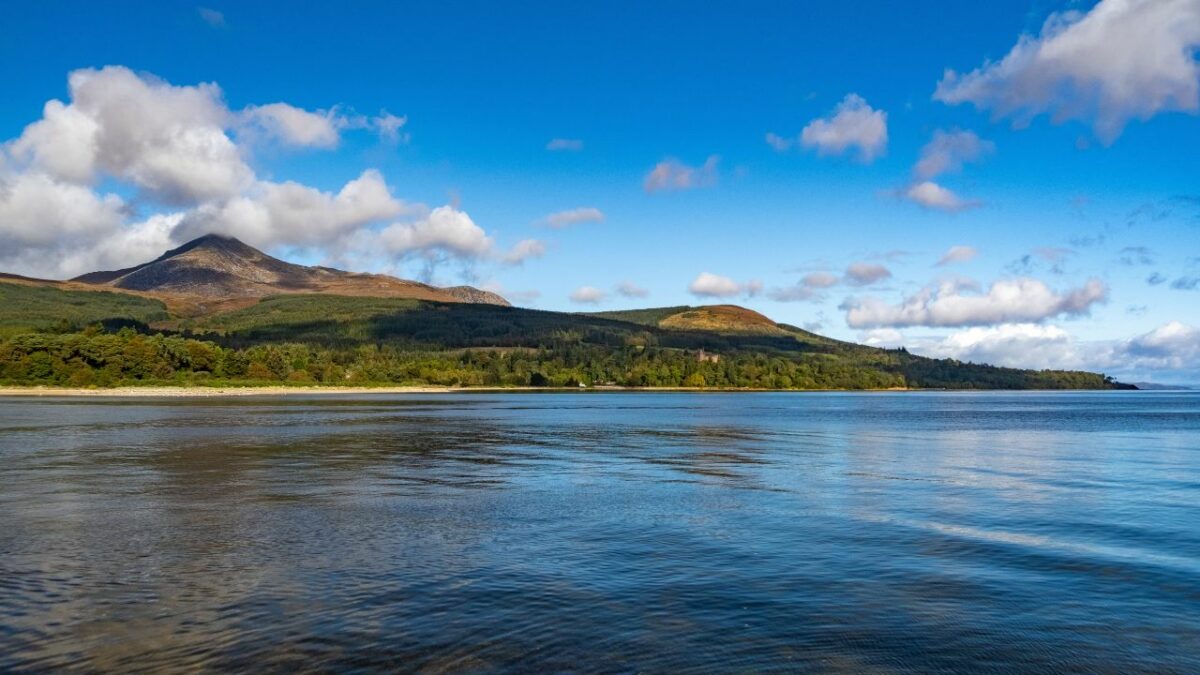
Silver Sands Beach is on Arran’s southernmost tip and is often considered the most beautiful beach on the island. This seaside wild camping destination is peaceful, relaxing, and incredibly scenic, making it the perfect choice for wild campers.
Getting to the beach from Brodick, Arran’s main village, requires only a short drive or bus ride. You can take Stagecoach 323 (Brodick – Kildonan) if you are travelling by bus. To get here by car, follow A841 to the Seal Shore Campsite parking lot.
When you get there, proceed down the long stairs to the beach and look for a place to pitch your tent. I recommend setting up camp on one of the grassy spots at the beach instead of the sand: these grassy areas are level and ideal for tent-pitching.
Pladda Island and its 18th-century lighthouse can be seen directly across the water. Furthermore, Silver Sands is close to Giant’s Graves, Glenashdale Waterfalls, Eas Mor Waterfall, Whiting Bay, and many other places of interest.
Claigan Coral Beach, Isle of Skye
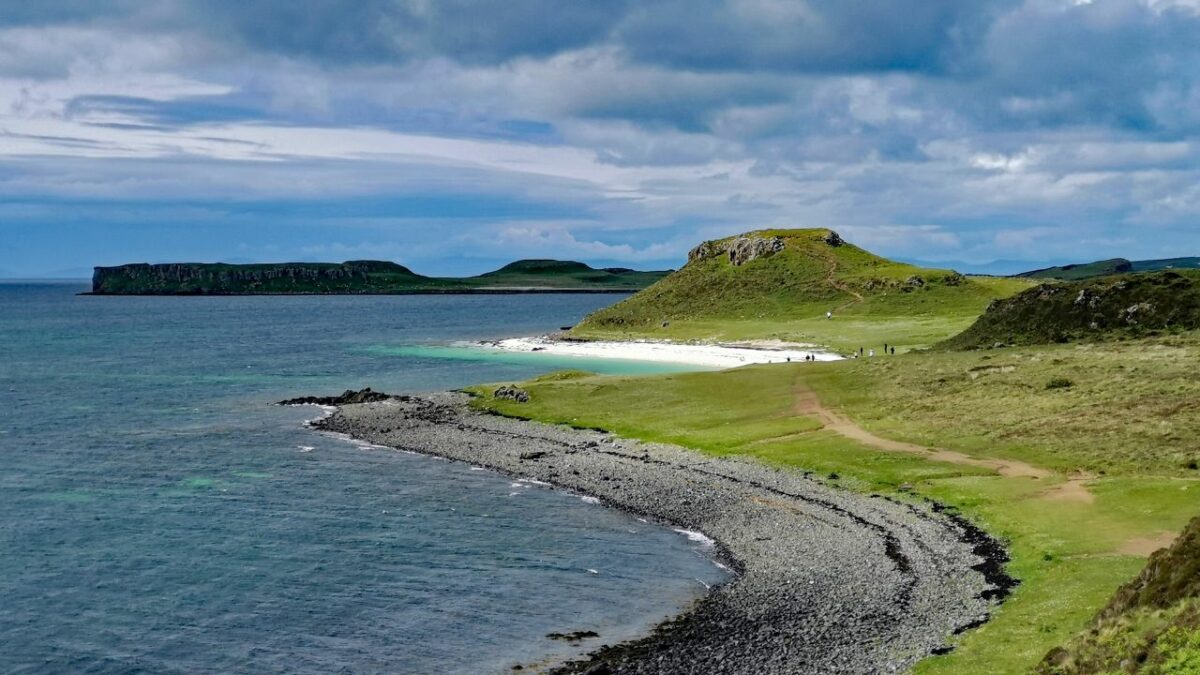
Located in the northwest of the Isle of Skye, Claigan Coral Beach is unlike any other in Scotland. This is a tranquil, almost ethereal place whose crushed white coral gives the water a beautiful tropical look.
However, wild camping here is not always possible. Occasionally, cows wander onto the beach from the grazing land next to the car park. Pitching a tent around free-roaming animals is dangerous for you and them.
If there’s livestock at the beach, but you really want to camp here, you should walk up to the beach’s northern end. There, you will find flat land that’s a bit higher up on the rocks and, therefore, out of the reach of the animals and suitable for camping.
The beach is connected to Claigan by a bumpy road, and there’s a large, free vehicle park at its end. Make sure to arrive early in the day, as the parking lot can get quite crowded.
Dornoch Beach Wild Camping
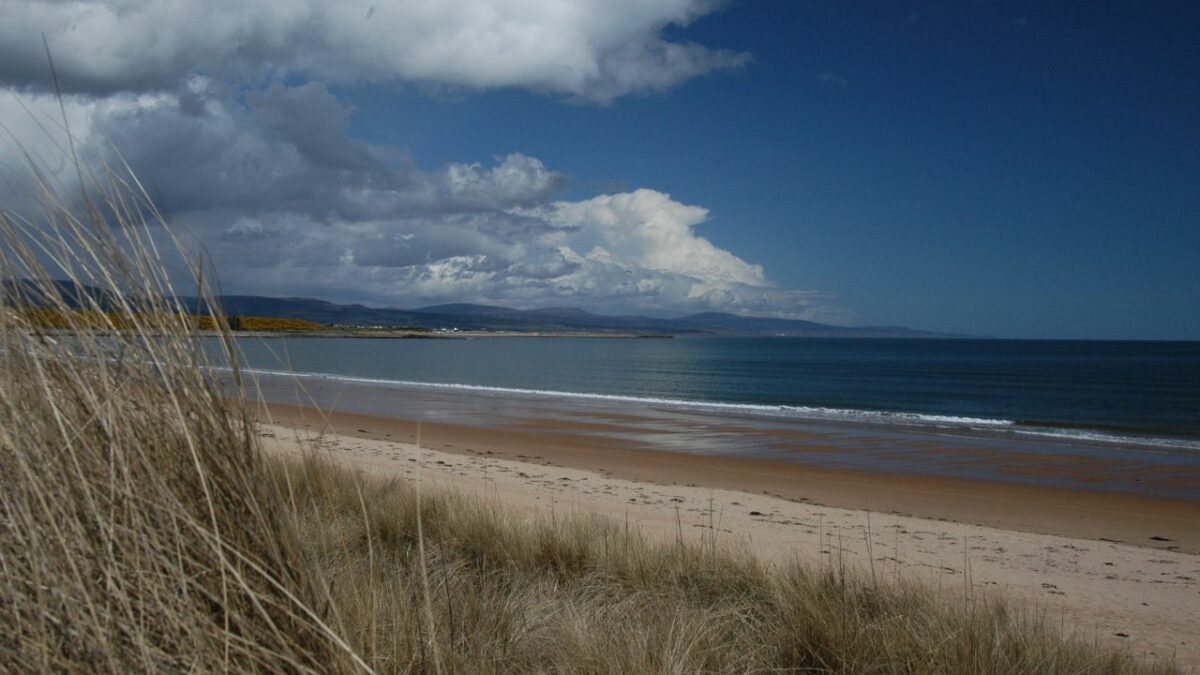
Dornoch Beach is just a 5-minute drive from the town of the same name. While it’s bustling with families and kids on a warm day, pitching here at night is almost eerie – the only thing that will keep you company is the sound of the crashing waves.
Dornoch is a very remote area, so finding wild camping spots along its beach is as easy as it gets. Obviously, you can only stay here if you stick to the Scottish Outdoor Access Code and follow the “leave no trace” principles, a set of outdoor ethics that’s almost like a bible to responsible wild campers.
This white sand beach runs for miles – perfect for beach cricket, kite flying, sandcastles, and pets. You can also go kayaking, windsurfing, and sea fishing here. Moreover, Dornoch Beach has toilets and disabled facilities, and a children’s playground.
I recommend visiting the Loch Fleet National Nature Reserve while in the area. The reserve’s pinewood trails and sandbanks, full of ospreys, otters, seals, and other wildlife, will be just a few miles north of your beachside camping spot.
Lossiemouth
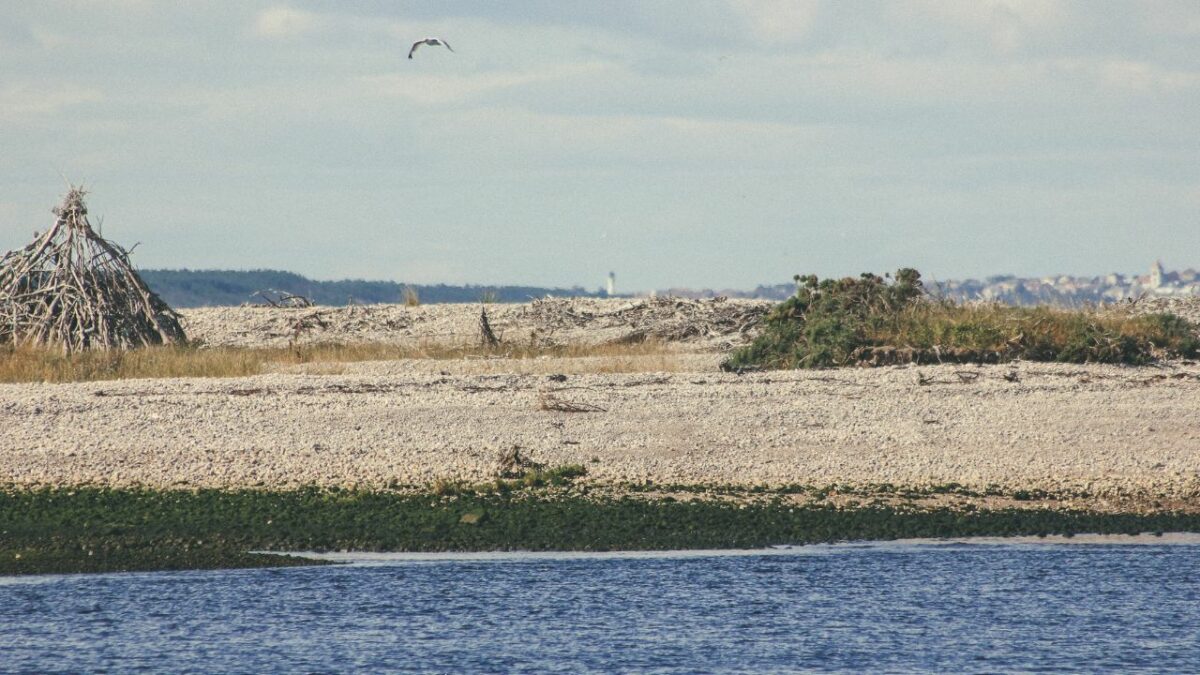
Lossiemouth offers more than meets the eye. Set in an area known as Moray Speyside, this coastal gem of a town features a brewery, a lighthouse, historic cottages, woodlands, and welcoming local restaurants open year-round.
However, the best thing about Lossiemouth to you, a wild camper, will be its two beautiful beaches – the East Beach and the West Beach. They surround the town on both sides and are tremendously popular with campers, swimmers, surfers, and people interested in seal or dolphin-watching.
Out of these two beaches, the eastern one is a bit more remote and provides plenty of opportunities for wild camping. The sunrise over East Beach is a truly spectacular sight, turning the sky pink and giving the nearby River Lossie an orange hue.
On the other hand, West Beach provides three idyllic miles of pristine sand and rolling waves. Near its parking area, there is a sheltered bay protected by natural reefs – make sure to visit it for your wild swimming fix!
Yet, for those who crave a juxtaposition of the wild coastlines and urban vibrancy, the wild camping spots near Glasgow beckon. While Lossiemouth boasts untouched beaches and coastal beauty, the outskirts of Glasgow offer a unique blend of city life and natural retreats. It’s a captivating choice for those who wish to immerse themselves in Scotland’s coastal wonders and the lively pulse of its urban centres.
North of Aberdeen (Balmedie and Blackdog Beach)
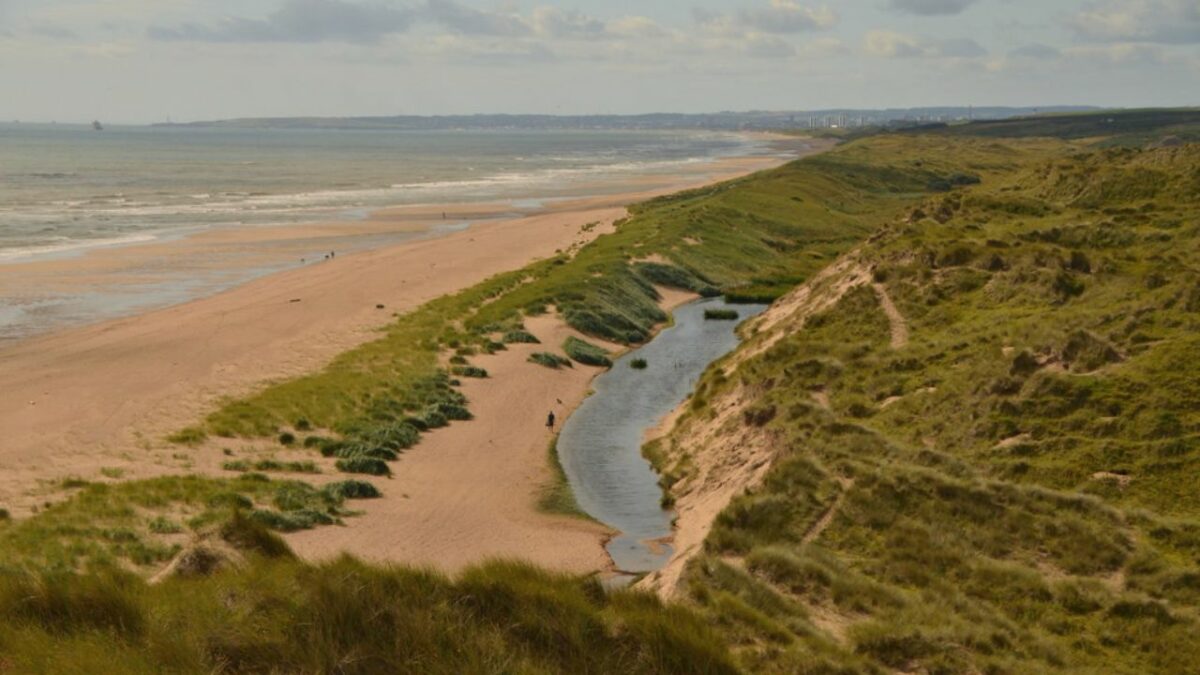
Are you looking for beachside wild camping opportunities around Aberdeen? If so, the two of your best options are situated north of the city: Balmedie Beach (7.5 miles north of downtown Aberdeen) and Blackdog Beach (5 miles).
While they’re quite similar, Balmedie Beach is the prettier of the two. Here, you’ll have miles of stunning seaside to explore and an abundance of cliff-like dunes to climb. Facilities include shops, toilets, and a ranger centre.
Blackdog Beach is an excellent alternative to Balmedie Beach if you prefer a more intimate setting. It is less crowded, features a small parking lot just off the road, and it’s quicker to access from the city.
Remember that the city itself has its own beach – Aberdeen Beach. It’s a popular recreational area with a fitness gym, retail park, cinema, and various restaurants and cafes.
Silver Sands of Morar
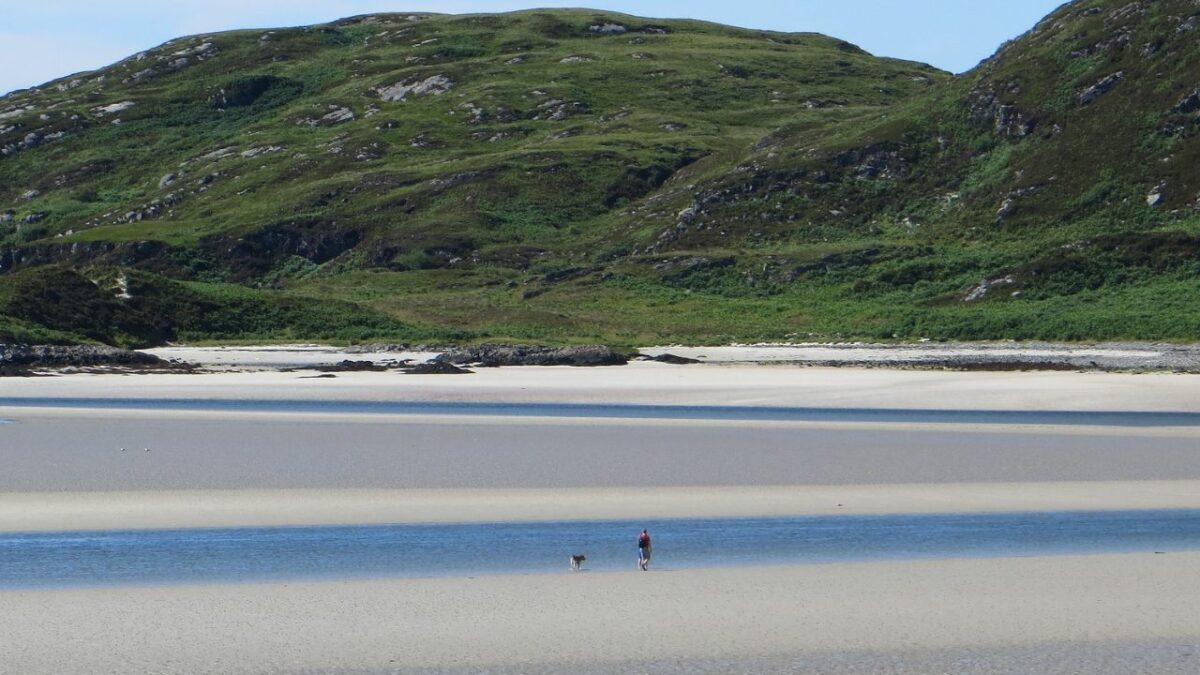
The Silver Sands of Morar are renowned beaches located south of Mallaig, on the Morar Peninsula. They feature pristine white sand and are a favourite destination of outdoor enthusiasts as they allow you to experience the area’s crystal-clear water and the breathtaking views of the Small Isles.
Two of the area’s most popular beaches are the Back of Keppoch and Camusdarach. However, wild campers can find several lesser-known but equally scenic smaller beaches by taking a short stroll along the coastline.
My favourite wild camping spot in the region is actually on River Morar (see the map above). It can be easily accessed from Morar Beach Car Park. If the parking lot’s height barrier of 2.2m puts you in trouble, you can leave your vehicle at one of the roadside parking spots scattered in the area.
This secluded spot provides a great view over the river and beyond. It is well-shaded by a couple of trees (with swings for kids) and has easy access to toilets and bins at the parking lot mentioned above.
Sandwood Bay Wild Camping in Sutherland
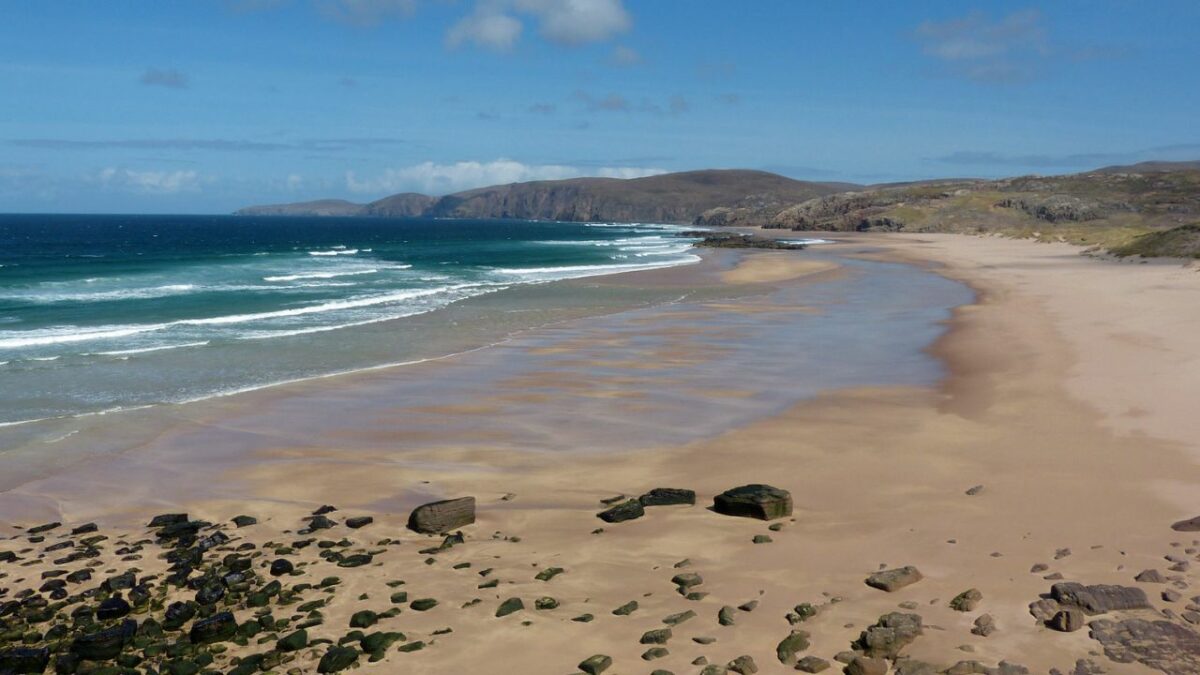
With its incredible views and high-rolling dunes, Sandwood Bay is one of the UK’s most iconic beaches. Located four miles from the nearest car park, this pink-hued stretch of sand is popular with hikers, surfers, and campers.
The path is signposted and starts across the road from the parking lot. Once you’ve gone through the gate, proceed down the gravel path that will take you near many freshwater lochs along the route. As you approach the end, you will encounter a bit of an ascent.
While the beach can be pretty busy at times, it never feels crowded – there’s plenty of space for everyone. I’d recommend setting up camp next to the ruins of an old house just below the path’s end or beyond the dunes to the south of Sandwood Loch.
Besides its magnificent pinky/white virgin sand and breathtaking views of the Atlantic Ocean and Am Buachaille (a famous sea stack), Sandwood Bay is rich in wildflowers. The dunes are home to over 200 plant species.
Luskentyre Beach Wild Camping
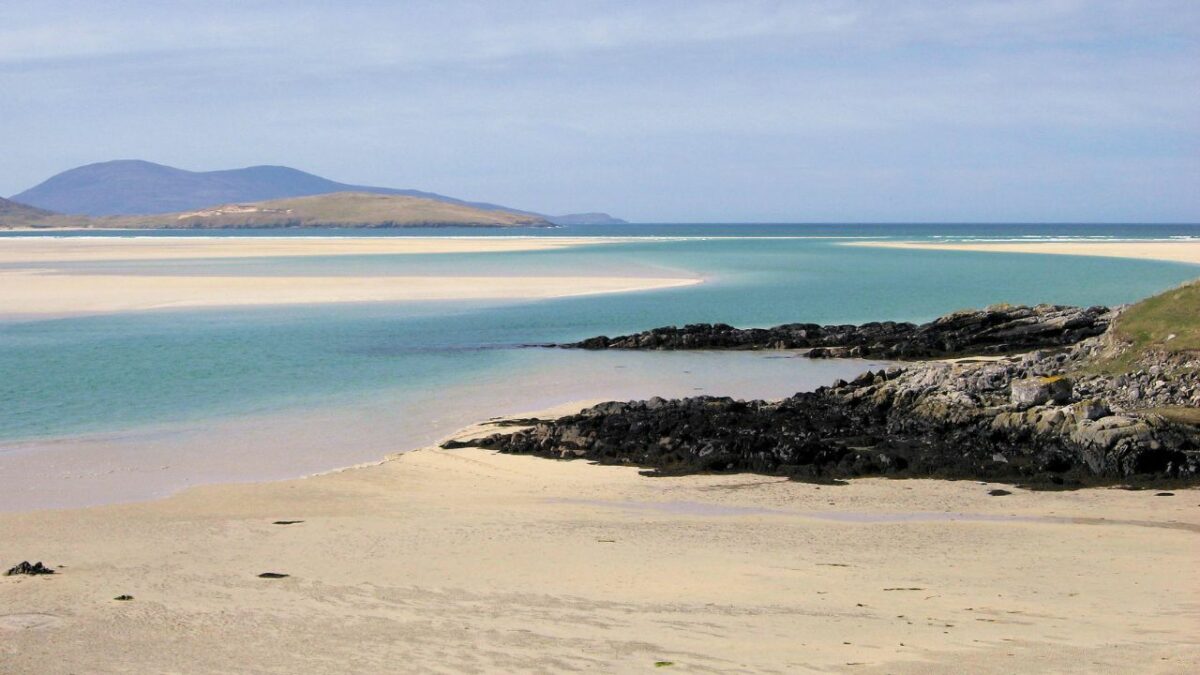
A wild camping trip to Luskentyre Beach stays in your memory long after you leave. This enormous, majestic beach lies hidden in the corner of South Harris, framed by a spectacular mountain range and covered in golden sand that appears to stretch to the horizon.
There is a parking lot where you can leave your vehicle and venture into the dunes to find a camping spot. An abundance of flat areas are nestled among the dunes, and these are just perfect for tent-pitching.
Remember that it can get quite windy here, so try to find a place nicely sheltered by the dunes. Bring a canoe or kayak to make the most of this top-tier camping destination – the water here is shallow and peaceful.
Nearby places worth visiting include Harris Tweed Isle Of Harris Shop, Isle of Harris Distillery, MacLeod’s Stone, and Sgarasta Mhòr and Seilebost beaches.
Yellowcraig Beach Near Edinburgh
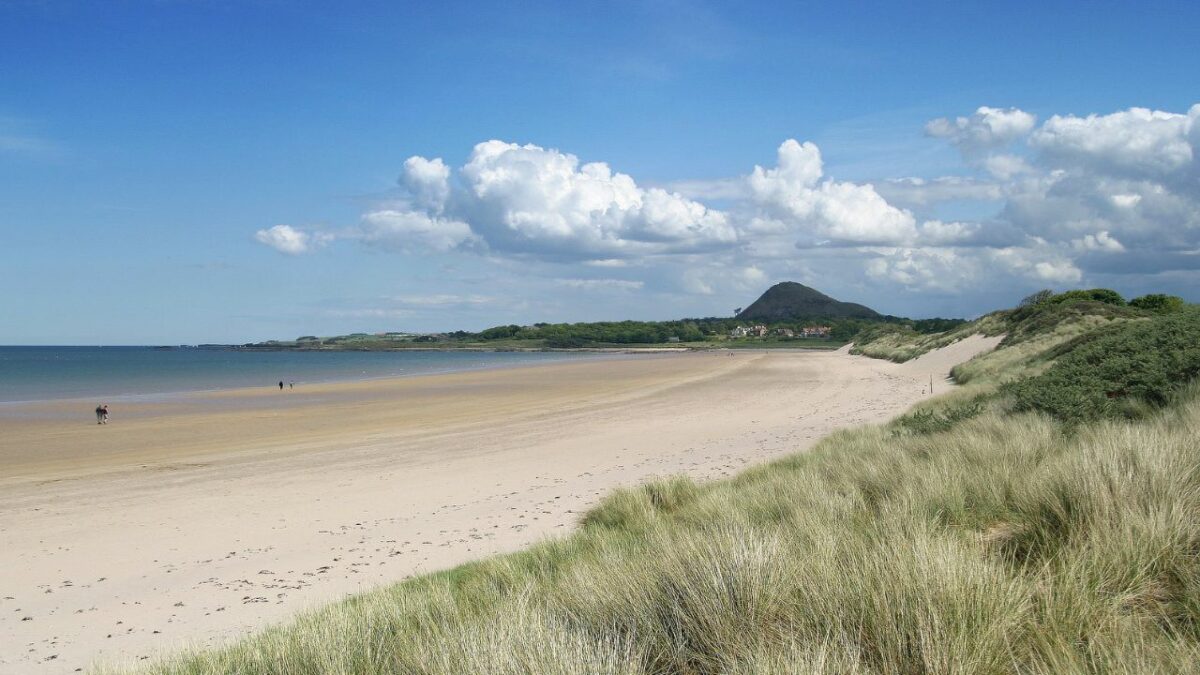
Situated just 20 miles from Edinburgh along the coast, Yellowcraig Beach is near North Berwick, a charming holiday village. There’s a bus stop on the main road, just over a mile from Yellowcraig.
You can reach the beach from Edinburgh by taking one of the X5 or 124 buses and getting off at Dirleton (Station Road). The beach is a couple of minutes walk from the bus station. Backtrack a few feet in the bus’ direction and then make a right.
After about a mile, you will reach the vehicle park and then the beach itself after a few more minutes of walking. Once there, start searching for a suitable pitch. I recommend setting up camp in the dunes – this will give you some privacy and protect you from the wind.
Unlike most wild camping locations in Scotland, Yellowcraig Beach is far more developed. The most significant benefit of camping here is having quick and easy access to the bathrooms: they can be found at the car park and are open from 10 AM to 6 PM.
Calgary Beach, Isle of Mull
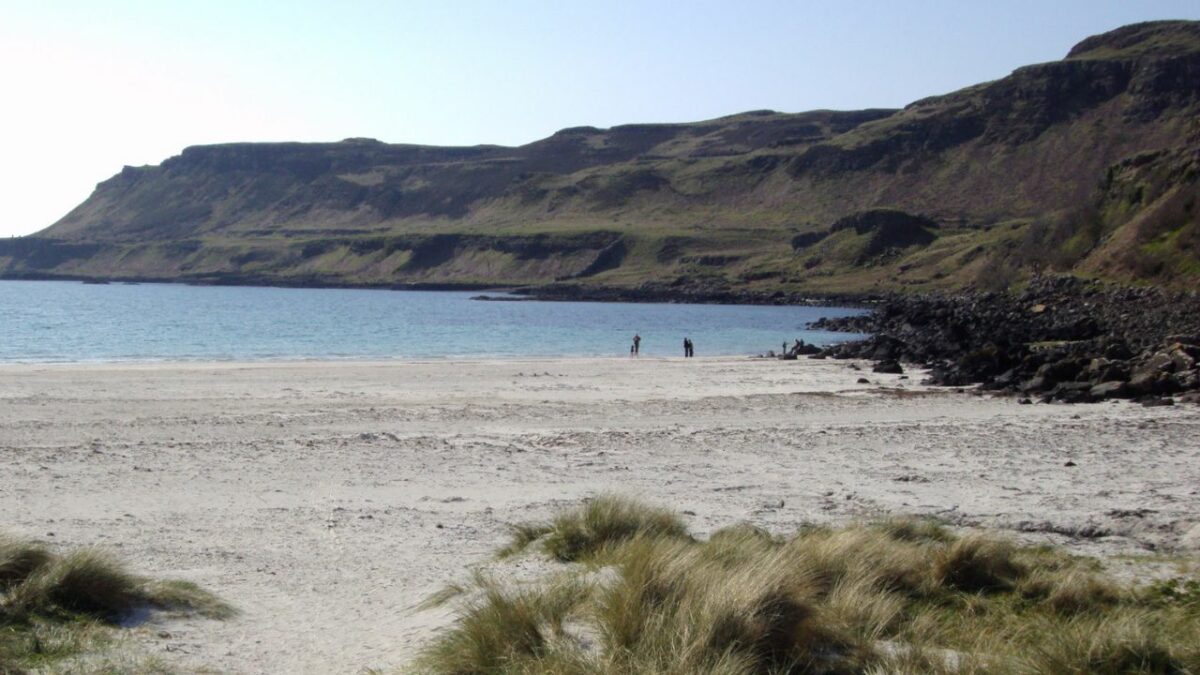
Calgary gets its name from the Gaelic word for pasture or meadow. Even today, the name is relevant because there is a large swath of grass right next to the beach, where many different flowers flourish in the summer.
The beach itself is a haven of blue sea and white shell sand. It’s a beautiful and safe environment where kids and adults can engage in different activities, including camping at one of the Isle of Mull campsites.
You’ll be able to pitch your tent at the southern end of the bay – pick one of the many grassy spots beside the sand. That’s the only beach sector where camping is allowed for small vehicles and tents.
While staying here, you’ll have easy access to public toilets and fresh water. Walk up the hill to the village of Calgary to stock up on supplies or have a drink at Calgary Cafe.
For more awesome camping spots in Scotland, check out our guide to camping at Ben Nevis.
Durness Beach Wild Camping
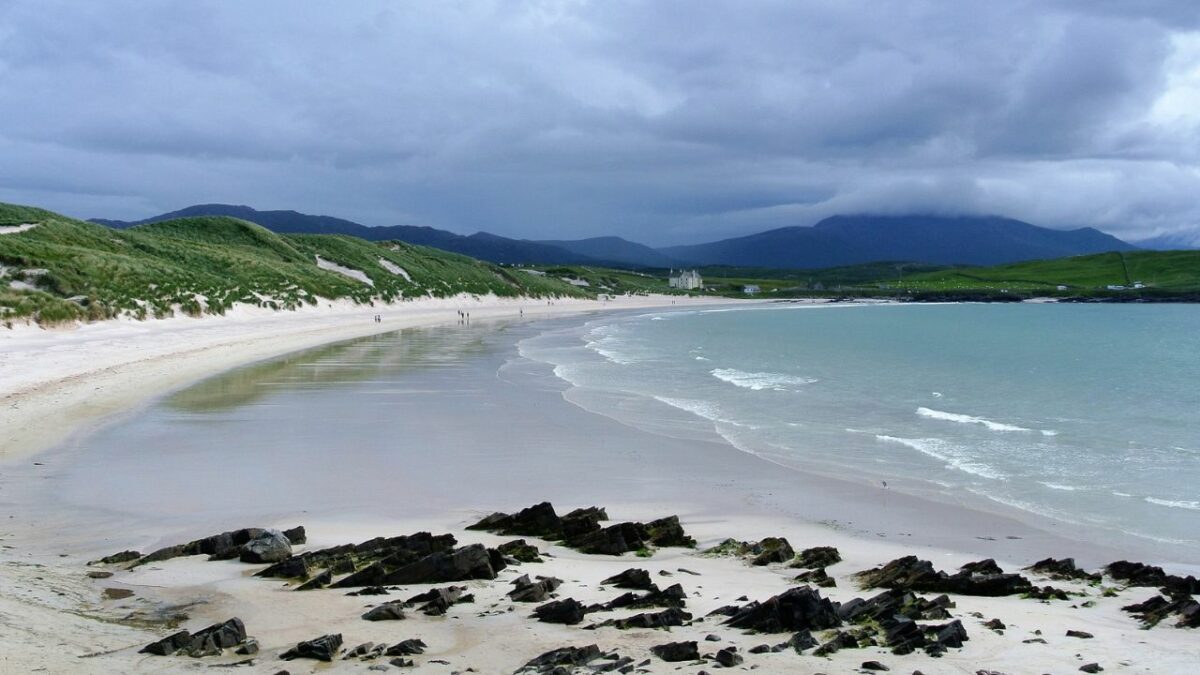
Durness Beach can be found in a gorgeous, well-sheltered bay situated next to the small village of the same name. This is a very remote part of Scotland – it takes about 5 to 7 hours of driving to reach the north of Sutherland from Edinburgh.
The journey is definitely worth it, though. The bay looks northwards to the open sea and provides some truly stunning views. Moreover, there are lots of additional scenic spots around Durness worth exploring.
Since you’ll likely come here in a vehicle, I recommend leaving it at the Sango Sands Campsite before descending to the beach to set up camp. Only a small entrance fee is required to enter the campsite, and you can park your vehicle wherever you like.
If you’re really lucky, you’ll get to experience the northern lights while camping at this astonishing beach.
Wild Camping Along the North Coast 500
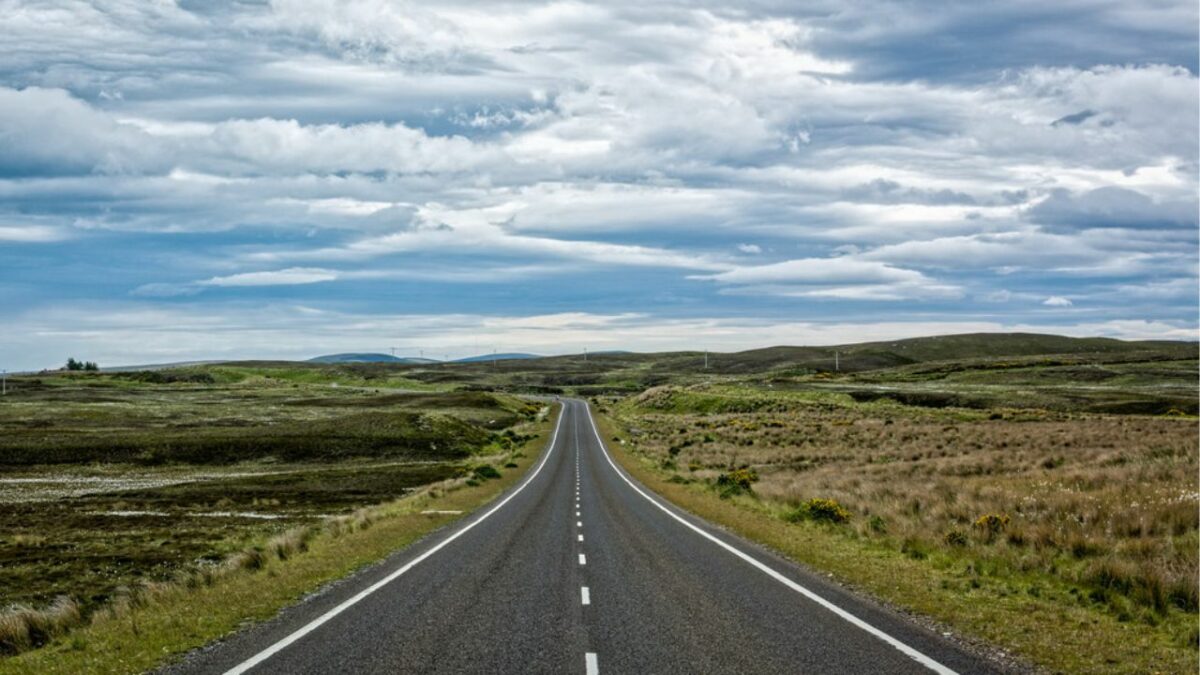
Featuring 516 miles of epic scenery around the coast of Scotland, the North Coast 500 is a world-class road trip in every sense of that term. It’s an ideal choice for anyone interested in wildlife spotting, whiskey tasting, history touring, Munroe-bagging, and, of course, wild camping.
Many of the beaches described in this article – such as Durness Beach or Dornoch Beach – can be easily accessed via NC500. If you’re interested in beach wild camping in Scotland, taking a car/motorhome trip down this road is your best bet: the route will take you to the country’s most scenic shores and bays.
If you would like to check out more awesome beaches where you can set up camp, see out list od wild campgrounds in Dumfries and Galloway as well.
Where to Next?
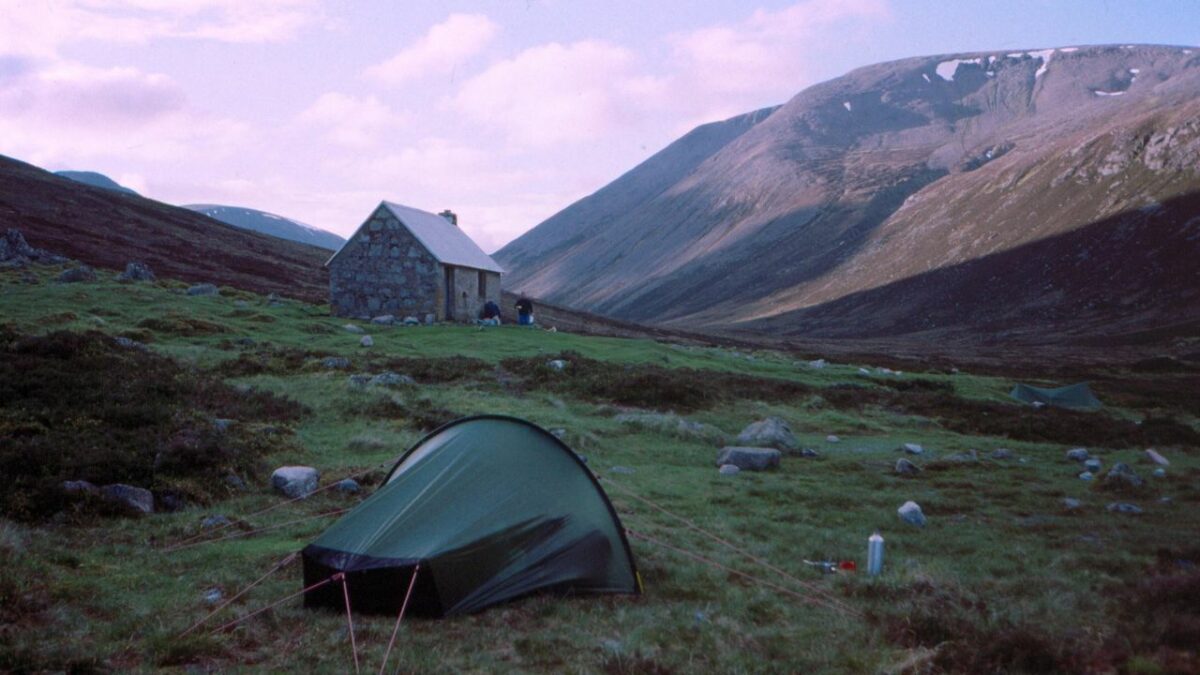
Once you’re done exploring the country’s most breathtaking beaches, why not switch scenery and go inland? The Cairngorms & Highlands of Scotland feature a myriad of secluded but incredibly scenic spots that are just tailor-made for wild camping. Whichever place you choose, you can be sure you won’t forget its sights, smells, and sounds anytime soon.

I love hiking, backpacking, and camping. From the Camino de Santiago to the West Highland Way in Scotland or simply a great day hike on the weekend. Hiking refreshes me, my mind, and keeps my body reasonably fit. So far I have walked three Camino routes and many other long distance hikes in the UK, Canada, and around the rest of Europe. One of the best was my hike up Ben Nevis.

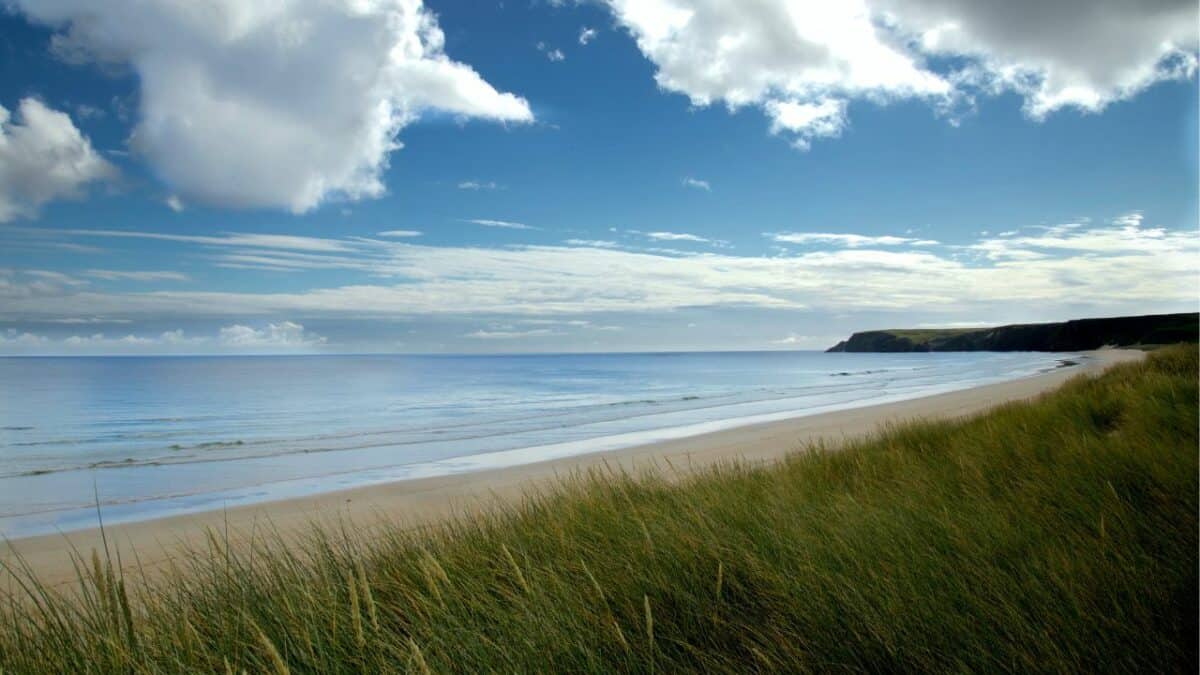
Hiya,
All these places look amazing, we have just purchased a box tent for our car, are there any beach side parking places in Scotland you could recommend for this type of camping, or off road areas we could visit.
Many Thanks
Kevin